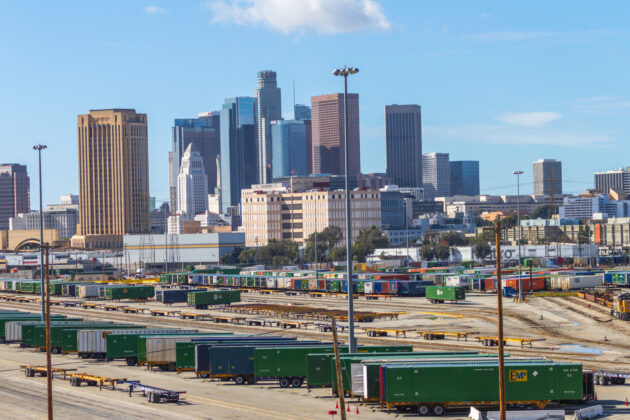California emissions push could affect Canadian equipment
The lasting marks of the U.S. Environmental Protection Agency (EPA) are found on every truck in a fleet yard.
Most of the agency’s vehicle emissions standards have been embraced by Canadian regulators in the name of uniformity. Diesel particulate filters (DPF), EGR valves, tanks of diesel exhaust fluid (DEF), and a litany of fuel-saving devices all evolved against a backdrop of rules established south of the border.
But a tougher set of standards is emerging in one specific state – and it’s caught the eye of regulators who put the final stamp of approval on Canadian equipment like trailers.

During an online presentation for the Canadian Transportation Equipment Association (CTEA), a representative from Environment and Climate Change Canada referred to coming Pembina Institute research that will explore the uptake of fuel-efficient trailer equipment, with a particular focus on Canada and California.
The specific interest in the western state is no small matter.
While America’s national regulator has waffled on the latest emissions rules – delaying trailer-specific GHG requirements, and essentially pushing Canada into a delay of its own – California is marching forward with some of the tightest emissions-related rules in North America. The state is setting goals for zero-emission vehicles like battery-electric trucks, tighter NOx restrictions, and even standards that would require fleets to submit quarterly reports on their emissions.
It seems strange that a single jurisdiction can carve its own path on such things, but the power to regulate vehicle emissions has long been a feature of the U.S. Clean Air Act, as long as such standards “meet compelling and extraordinary conditions”.
Several unique pollution-related challenges are to blame. Population density, surrounding mountains that trap pollutants, and a warm climate and low rainfall contributing to higher ozone levels all conspire against the air quality in the LA basin.
But the Golden State is not standing entirely on its own. This July, 15 states and the District of Columbia signed a memorandum of understanding promising to collaborate on the adoption of zero-emission vehicles, with a goal of reaching 30% of medium- and heavy-duty trucks sales by 2030.
National mandate or not, the standards will carry a lot of weight. These jurisdictions collectively account for half the U.S. trucking economy and 40% of the value of goods moved by trucks.
It could mean some splitting headaches for engineers and fleets alike.
We know there is a price to be paid if regulators are too quick to embrace such rules. A perfect example of that came in the form of maintenance nightmares coinciding with the first exhaust gas recirculation systems, lost fuel economy, and more.
Those who shudder at the thought of a new generation of emissions controls can take heart in a related requirement for stronger warranties, but that coverage will come at a cost. And it will be reflected in higher sticker prices.
Southern-focused rules adopted in Canada could present some unique challenges in our land of colder weather and heavier weights as well. Low rolling resistance tires might be great for a bare highway, but deeper lugs might be a safer option on a snow-covered road. Ambient temperatures also affect thing like the operating ranges for battery-electric trucks. The list goes on.
Canada still needs address pollution-related challenges, of course. Heavy-duty vehicles account for 31% of the nation’s transportation-related GHG emissions, and the levels have tripled since the 1990s. According to the National Inventory Report, those emissions are also projected by 2030 to surpass levels generated by light-duty vehicles.
But in the search for the best options for the Canadian market, we have to hope that regulators will account for operating environments and needs that are as different as beachfronts and ski slopes.
Melina Kennedy, Cummins vice-president – product compliance and regulatory affairs, said in a recent webinar that it’s an “unprecedented time” of emissions regulations.
Let’s hope it enjoys an unprecedented focus as well.
Have your say
This is a moderated forum. Comments will no longer be published unless they are accompanied by a first and last name and a verifiable email address. (Today's Trucking will not publish or share the email address.) Profane language and content deemed to be libelous, racist, or threatening in nature will not be published under any circumstances.
We need to look at natural gas powered tractors for certain markets. California needs to provide more parking and electric plugs for tractors and reefer units before bringing in these new standards. This mean more owner ops will be pushed out of transportation.